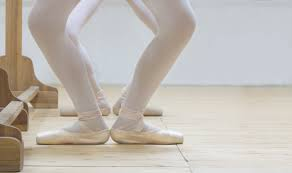Snapping Hip Syndrome (Dancer’s Hip) – Blog by Alice Smith
What is it?
Snapping hip syndrome (SHS) is a condition that is defined by a snapping or popping sensation in or around the hip when it is moved in a certain direction. It is most commonly felt when walking, getting up from a chair and swinging your leg around. The sensation occurs when a muscle or tendon moves over a bony protrusion in your hip. There are various causes of SHS and there a thorough examination is required. Some people do not experience pain or dysfunction with the sensation, whereas others report pain and weakness which interferes with their hobbies. In some cases, snapping hip leads to a painful swelling of the fluid- filled sacs that cushion the hip called bursitis.
Snapping hip is believed to affect 5% of the population and is most commonly found in females between the ages of 15 to 40 years old. Sports which involve repetitive hip movement forwards and backwards can lead to this condition. This overuse injury is most commonly seen in dancers, soccer players, runners and gymnasts.

Causes:
The “snap” sensation experienced may be a result of the iliotibial band snapping over a structure on the outside of your hip called the greater trochanter. Some patients describe the sensation of the hip popping in and out of the socket or dislocating. This is however, not what is occurring. The symptoms develop gradually and without a traumatic incident.
Alternatively it can be caused by the iliopsoas tendon snapping over a bony area of the pelvis. This is a muscle located predominantly at the front of pelvis. Patients describe a deep “clunk” or “click” that can be illicit by extending the hip or rotating it out to the side.
Least commonly, it can be the result of a cartlidge tear or loose body in the hip which also leads to the hip “locking up”. This cause of SHS is normally a result of an injury or traumatic event to the hip.
Examination:
During your assessment, your physiotherapist will obtain a detailed history from you about your hip symptoms to rule out any other conditions. You physiotherapist will then perform specific tests on your hip to determine the exact location and cause of the snapping hip sensation. For example, often in dancer’s a deep plie can illicit the hip snap sensation, and therefore they will be asked to perform this movement during the assessment. Ultrasound or MRI can be advised if your physiotherapist is concerned about internal hip pathology.
Management:
The first line of treatment for this condition involves reducing pain with rest, ice, non-steroidal anti-inflammatories if required and physiotherapy. Once your pain has settled, physiotherapy management then aims to address specific impairments such as a tight hip flexor muscle in order to fix imbalances which may have led to this condition. In this cause management will include stretching of the front of your hip to lengthen the muscle combined with strengthening exercises and pelvic stabilisation exercises. You will also be educated to avoid the positions and movements which cause your symptoms and aggravate your pain.
If you are experiencing snapping hip syndrome, please contact us so we can help you out with a comprehensive assessment and treatment plan.
Book an appointment today for your assessment!
Blog by Alice Smith (Physiotherapist)


